In the past few days, surely all the problems related to BKAV’s TWS AirB and AirB Pro headphones are the topic that causes the media to spend a lot of paper.
One of the points that catches our attention the most is that the charging box hinge is made of plastic, specifically according to BKAV’s share, it is made of TPU 80 Shore, a “premium” plastic used used in many industrial fields.
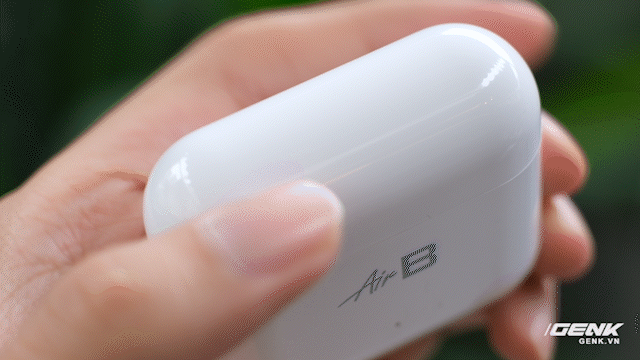
Realizing that this is not only a breakthrough but also a new wind blowing to the world of TWS headphone designers around the world, I also feel like owning this super product, but unfortunately, BKAV has not sold the commercial version yet. commercial.
In order to satisfy the need for beauty and superiority, I decided to turn my broken AirPods Pro hinge into a “rubber band” hinge for a temporary self-experience while waiting for the semi-official AirB. And below is the process of creating this new wind hinge.
Detailed measurements and sketches
To be able to replace the traditional iron hinge, I will have to sketch out the shape of the rope, especially the two ends of the rope. This is where the two halves of the charging box will be linked, I will have to rely on the available edges of the box to create a holding point for the two ends of the cord.
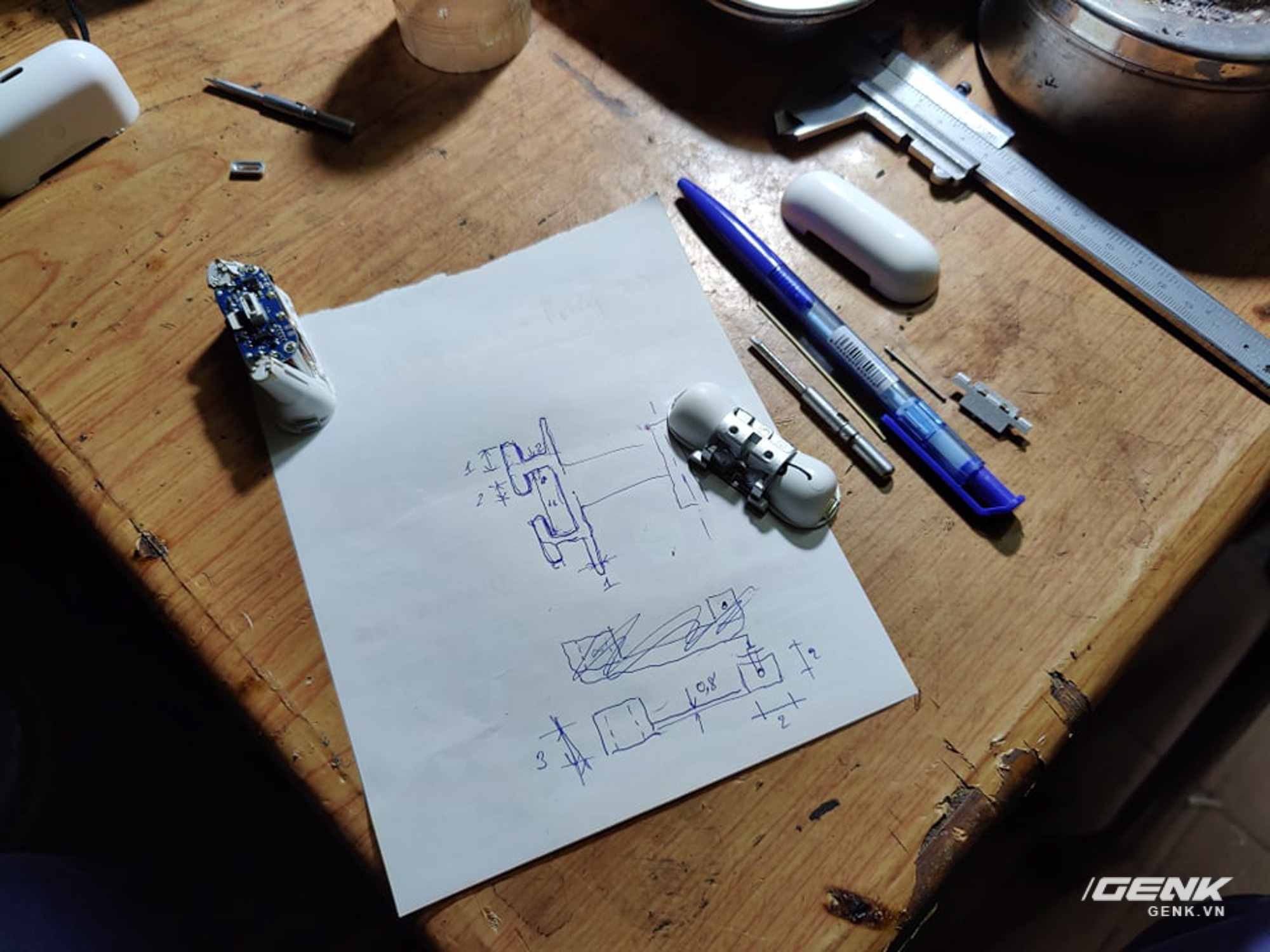
After sketching out the shape, I began to measure the dimensions carefully to make sure it was easy to install and fit what was available on the two halves of the box. Measurements must also be to not show a little error created by the printer, so you will often have to choose a slightly looser size.
3D rendering
The details are not too complicated, but I still need to learn a bit to be able to successfully build the 3D model correctly.
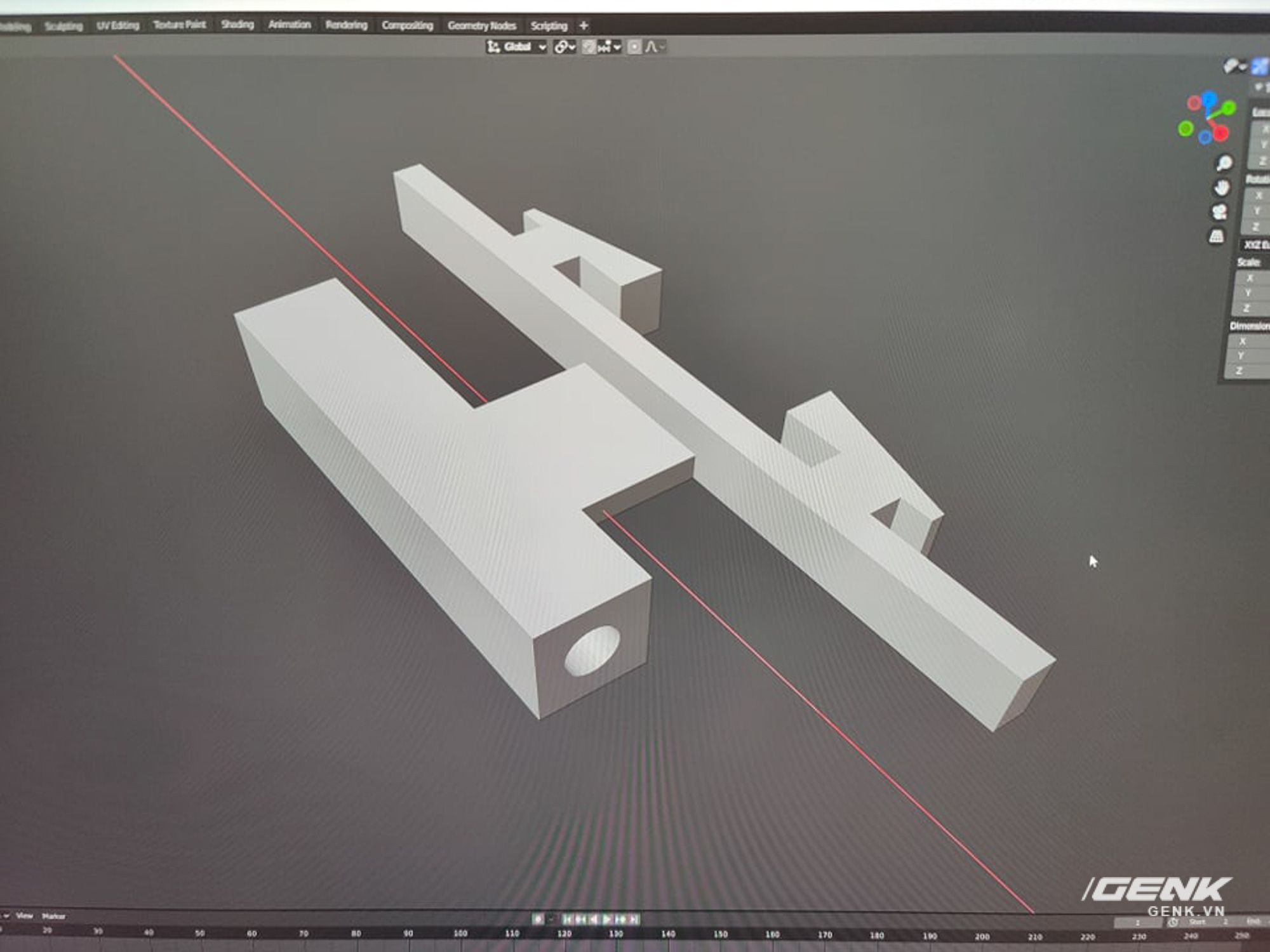
Cut class
Anyone who has ever used a 3D printer will know a term called Slice, slice is a word that describes cutting a 3D model from a solid shape into many thin layers that are as thick as the 3D printer can print, and at the same time. These cuts are also drawn as lines just to represent the line printed on the 3D printer.
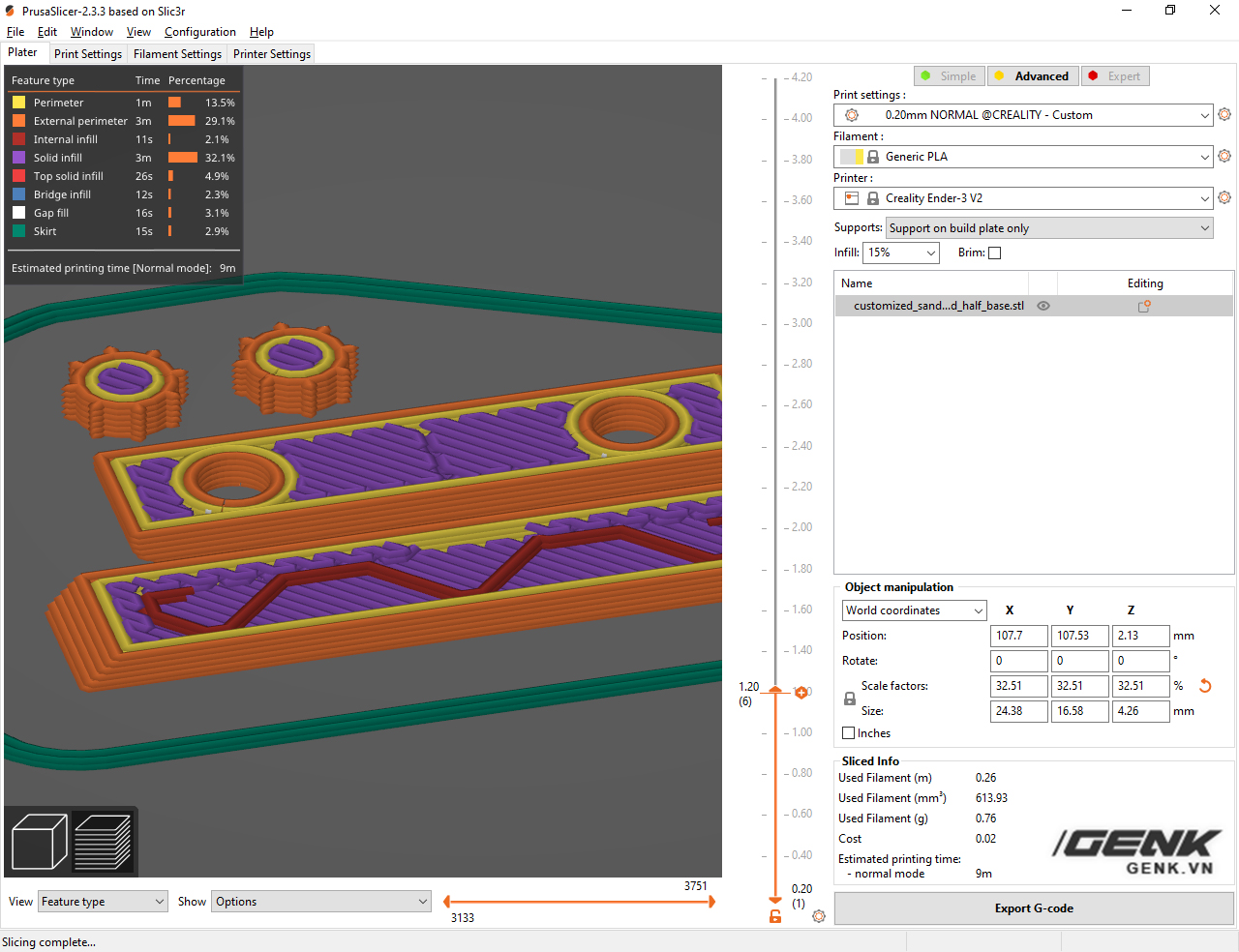
Printing TPU on 3D printers is also a bit more troublesome than common plastics such as PLA or ABS, TPU is a more flexible plastic, so its shape stability is poor, so the printing speed is only 1 half that of other hard plastics.
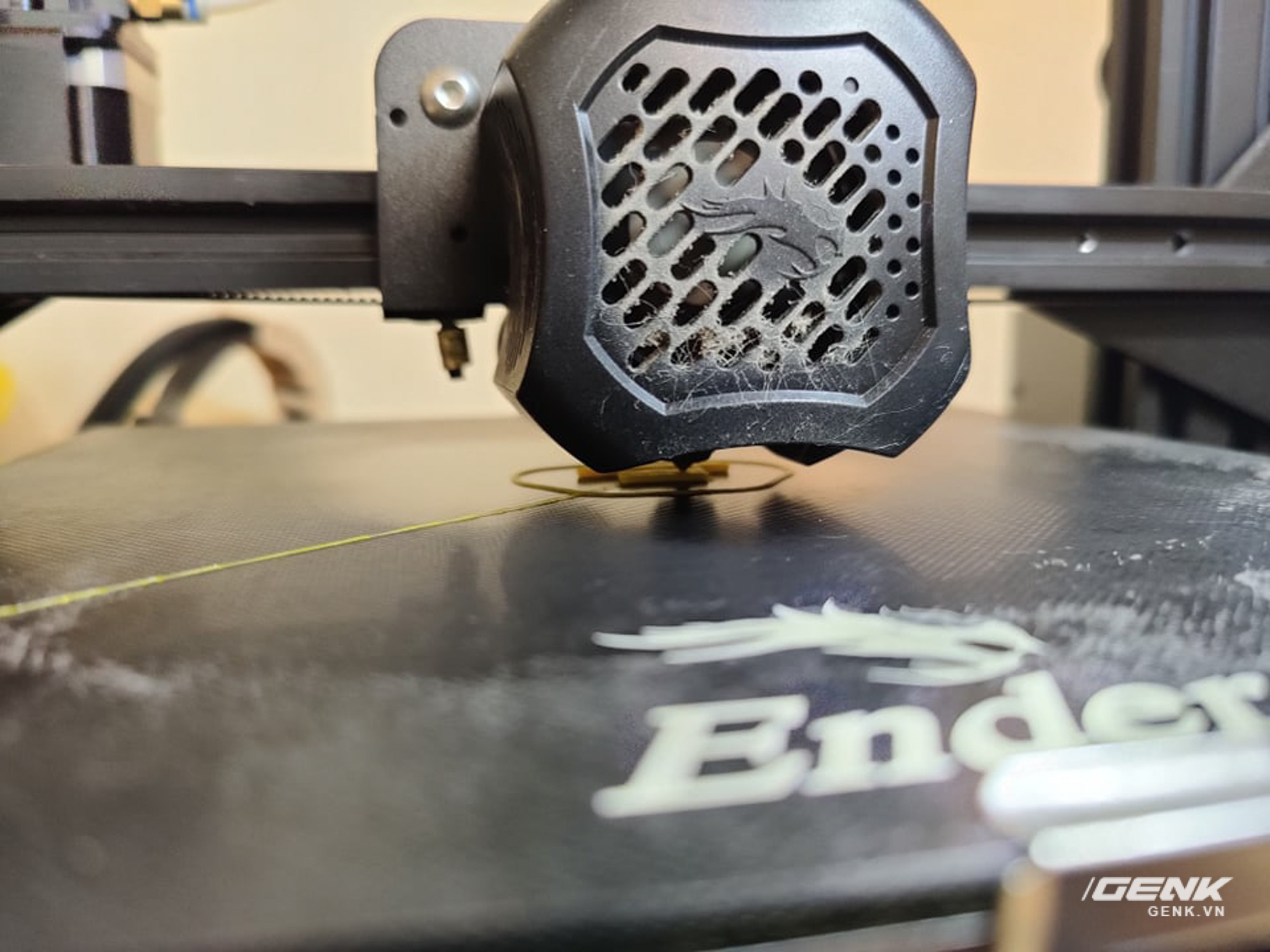
Printing high quality plastic hinges.
Also due to its flexibility, the printed shape will have more errors than the design. And this is also the point where the product is at risk of being damaged.
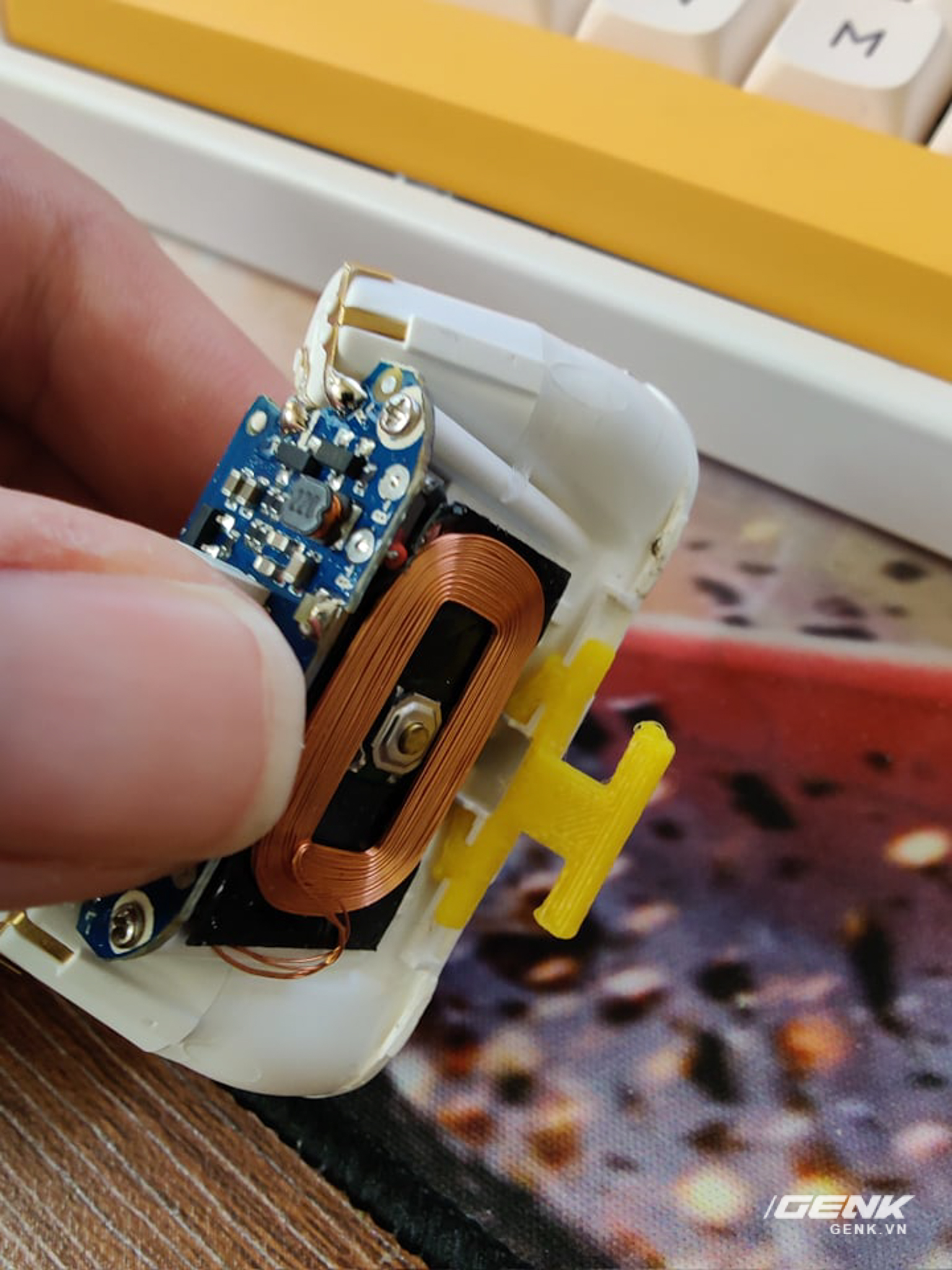
The first product is not very accurate.
Fortunately, after about 4 printing errors, I finally found the right parameters for this high-class plastic and the results were at an acceptable level, just enough to satisfy my passion.
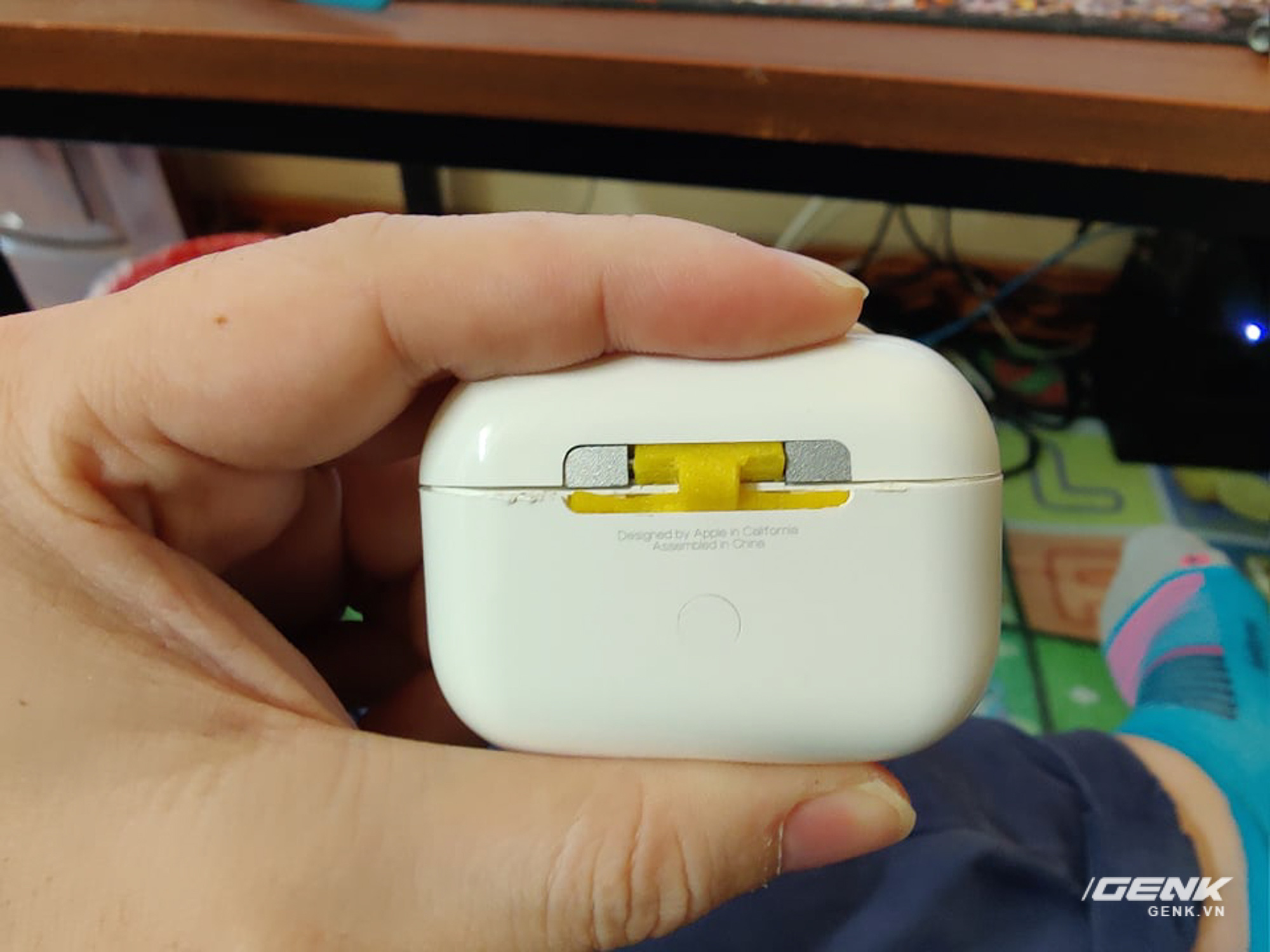
After several times, successfully installed.
And here are my results… because my TPU is not a high-end 80 Shore type, so the elasticity may not be as good as the AirB ear hinge, but the price of TPU is quite high and it’s not. It was easy to find the right 80Shore, so I regretted it and accepted the product was only 80% compared to AirB.
Open AirPods Pro elastic band hinge with 1 hand.
If you guys think the AirB’s hinge type is great, try doing the same as me for your own headphones.
.
